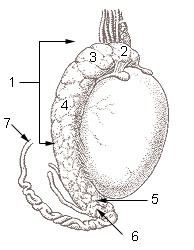 | ||
Prehn's sign (named after urologist Douglas T. Prehn) is a medical diagnostic indicator that was once believed to help determine whether the presenting testicular pain is caused by acute epididymitis or from testicular torsion. Although elevation of the scrotum when differentiating epididymitis from testicular torsion is of clinical value, Prehn's sign has been shown to be inferior to Doppler ultrasound to rule out testicular torsion.
According to Prehn's sign, the physical lifting of the testicles relieves the pain of epididymitis but not pain caused by testicular torsion.
Another way to differentiate between epididymitis and torsion on physical examination is checking for the cremaster reflex which is absent in the case of torsion.
History
It was discovered in 1934, by Douglas T. Prehn (August 1, 1901 – June 30, 1974), a prominent American urologist in Wisconsin.
